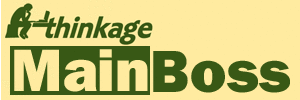History Comments on Requests, Work Orders and Purchase Orders.
During the course of a job, your personnel may need to communicate with each other: asking for information
('Am I cleared to put in overtime on this?'), reporting a problem ('The tenant won't let me in'), and so on.
It's useful for such communications to be recorded in some way. This will preserve what your people discussed during a job;
if some issue arises later (e.g. a customer complaint), you'll have a complete picture of what went on.
The problem is that such communications may be spread over many media: phone calls, e?mail, text messages,
etc. Unless everyone involved keeps very careful notes, something will likely be lost, forgotten, or misremembered.
To solve this problem, MainBoss has facilities to let MainBoss users communicate with each other,
with each such communication linked directly to the work order.
These messages take the form of comments recorded in the work order's State History section.
The easiest way to create such comments is to click the Add Work Order Comment button
either in the work order table viewer or in the work order record itself.
So how does this actually work? Suppose you're doing a renovation job that involves
repainting a room and various other bits of work. The work order is written up and workers are assigned,
but before anything can happen, suppose you need a municipal work permit.
The supervisor in charge of the work can use Add Work Order Comment to given the work order a status:
'Waiting for work permit'. When this happens, everyone assigned to the job
(including all workers and anyone else listed in the work orders Assignees section)
receives an e-mail indicating what's going on.
At the same time,
MainBoss makes an entry in the work order's State History section recording the status.
When the permit comes in, the supervisor uses Add Work Order Comment to remove the 'waiting' status.
The supervisor can also enter a specific comment, like 'Joe and Chris will move all the furniture
out of the room Monday morning.' When they're done, Joe and Chris can add a comment saying,
'Furniture moved.' (Note that MainBoss automatically records the date and time of this comment,
letting you keep track of the job's progress.)
Again, all assigned personnel receive e-mail whenever such comments are recorded, so that all workers know what's going on.
As the job progresses, the supervisor and workers can use these comments to coordinate the various parts of the job,
and deal with problems that crop up along the way. When the job is finally finished,
all these communications remain available in the MainBoss database in case you ever need them later.
The same sort of facility is available for requests, making it possible to keep complete records for those too.
In particular, you can configure MainBoss so that communications associated with a request
are automatically e-mailed to the requestor to keep him/her in the loop.
(You can also record comments that aren't sent to the requestor.)
Similarly, the same facility is available for use with purchase orders.
For example, the person receiving a shipment might use comments to record problems
(goods broken during shipment, late delivery, and so on).
These notes help you understand and remember what actually happened, in case that information is useful in future.




